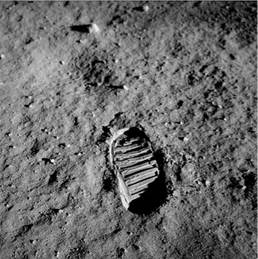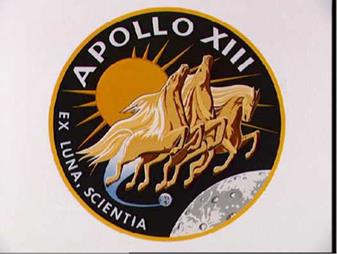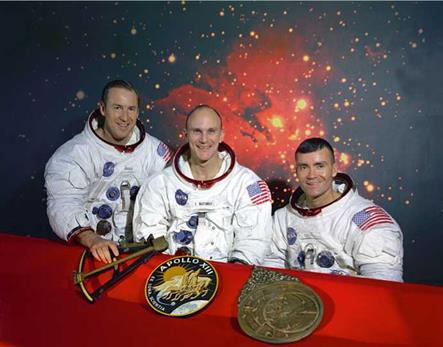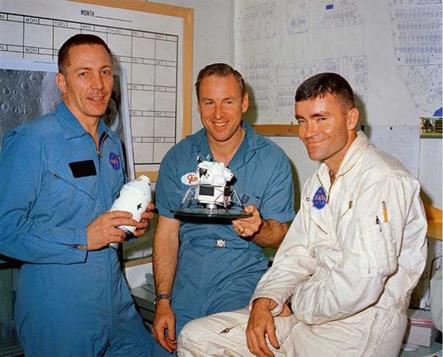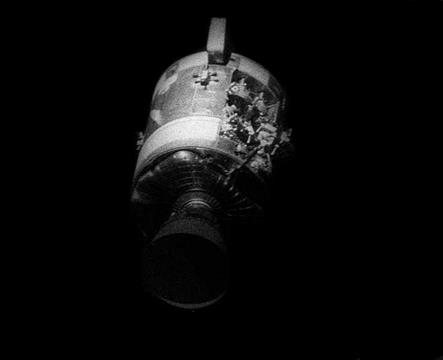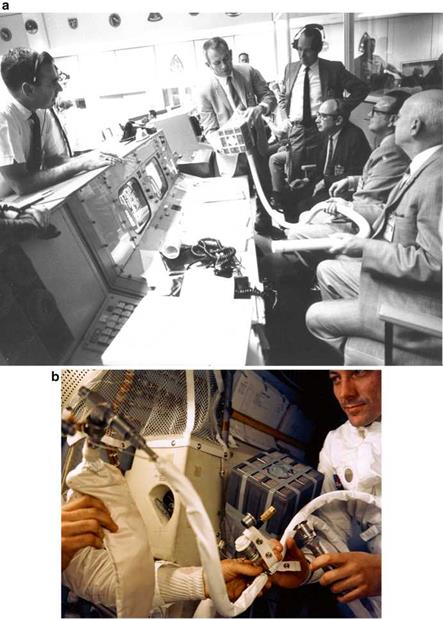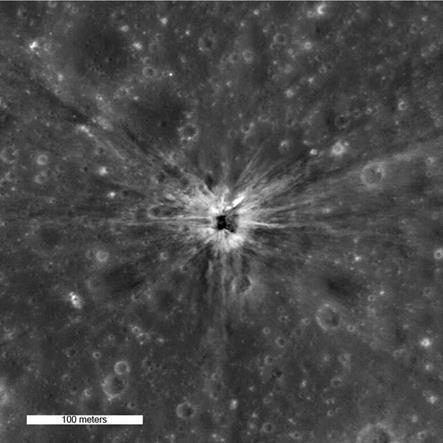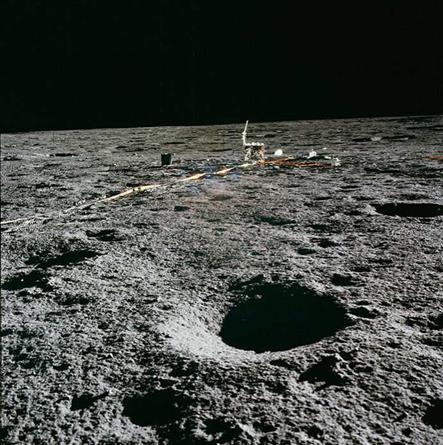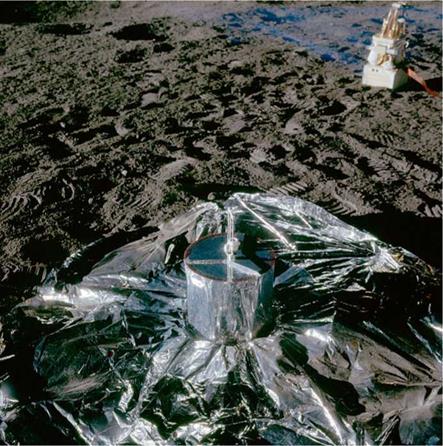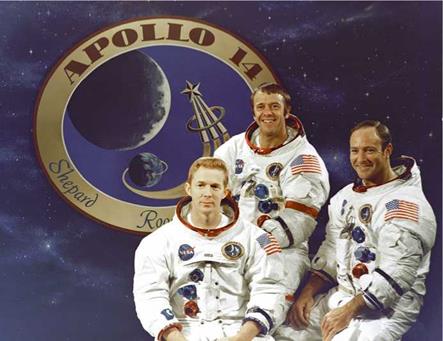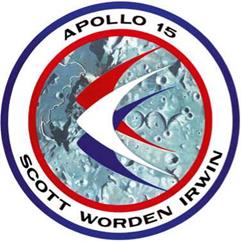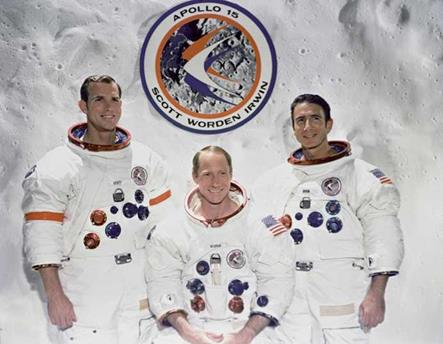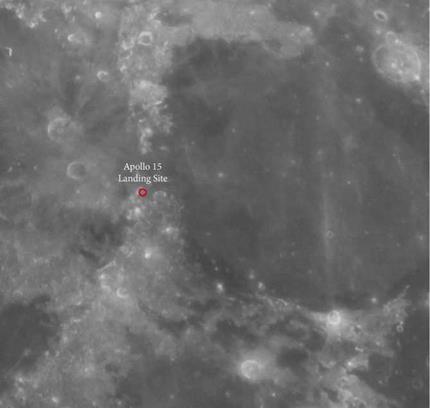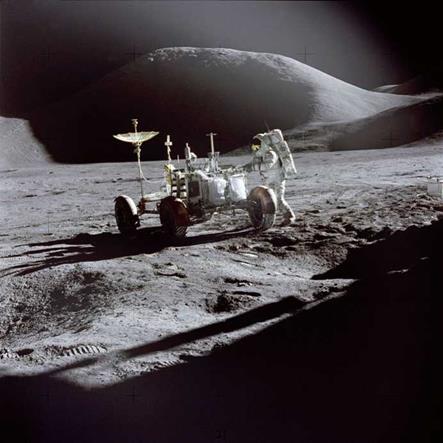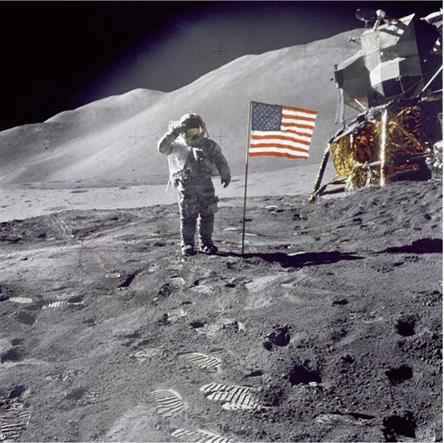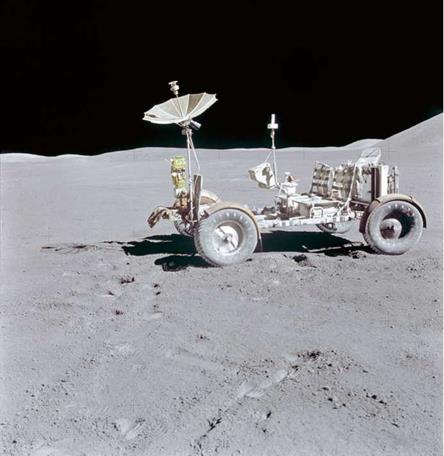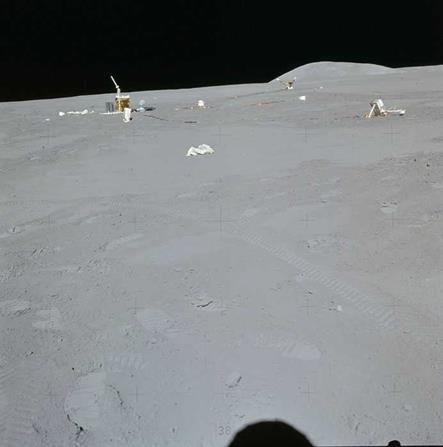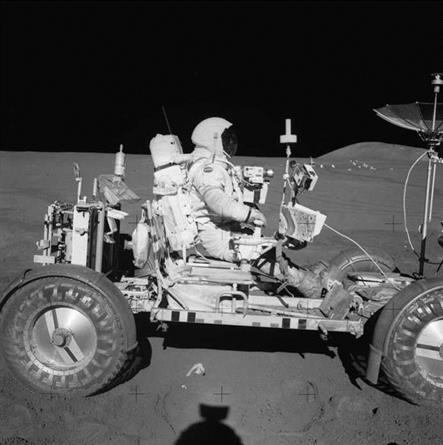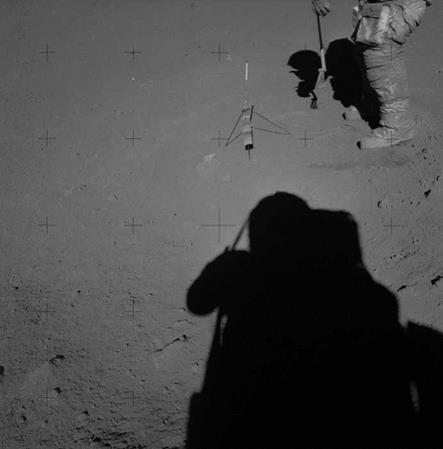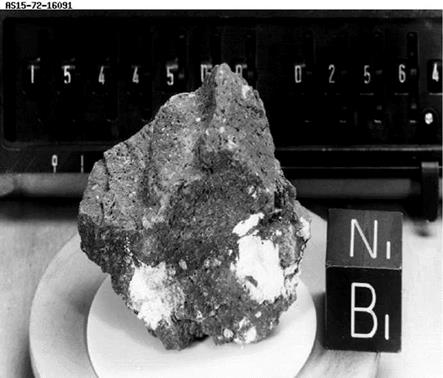Dates: 31 January – 9 February 1971
Crew: Commander – Alan Shepard CM Pilot – Stuart Roosa LM Pilot – Edgar Mitchell
Command Module: Kitty Hawk Lunar Module: Antares
Accomplishments: Third Lunar Landing, completed Apollo 13 mission for Fra Mauro Region. Most famous for Alan Shepard’s golf shots on the Moon.
J. L. Chen, How to Find the Apollo Landing Sites,
The Patrick Moore Practical Astronomy Series, DOI 10.1007/978-3-319-06456-7_6, © Springer International Publishing Switzerland 2014
|
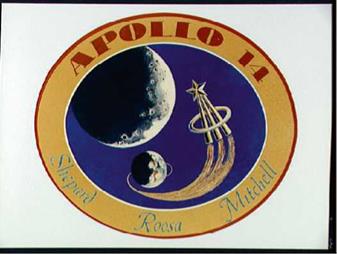
Fig. 6.1 Apollo 14 Insignia. Courtesy of NASA
|
Apollo 14 was the third lunar landing, the last of the H series missions, and marked the return to space by America’s first astronaut in space, Alan Shepard. Apollo 14 featured Stuart Roosa as the CM pilot and Edgar Mitchell as the LM pilot, both on their first and, as it turned out, only space missions. With two space rookies, and one astronaut with only a suborbital 15 minutes space ride under his belt, the crew of the Apollo 14 were affectionately called “The Rookies.”
The Apollo mission almost did not happen for Shepard. From 1964 to 1968, Shepard found himself grounded because of Meniere’s Disease, an inner ear condition that affects hearing and balance. It is characterized by episodes of vertigo, tinnitus, and hearing loss. Meniere’s Disease greatly affected Shepard’s sense of balance, resulting in random and debilitating attacks of extreme vertigo. The condition obviously prevents pilots and astronauts from performing aviation and space related tasks.
According to Andrew Chaikin, in his book “A Man on the Moon,” original Mercury Seven astronaut Gordon “Gordo” Cooper was scheduled to serve as mission commander of Apollo 14. However, since his remarkable Mercury flight of “Faith 7”, Cooper had gradually fallen out of favor with NASA officials due to his casual approach to training and his critical attitude towards NASA management. The best assignments for Cooper were as backup pilot for Gemini 12, and as backup commander for Apollo 10. Historically, a backup crew at NASA would receive a prime crew assignment two or three missions later. Faith 7 proved to be Cooper’s only spaceflight, and Alan Shepard became the only Mercury Seven astronaut to reach the Moon. NASA had lost faith in Gordo.
Alan Shepard’s inner ear condition was cured with a new surgical method for treating Meniere’s Disease. And with the internal politics of NASA and Gordon Cooper’s somewhat casual and rebellious attitude, Shepard worked hard to regain flight status, and was named mission commander of Apollo 14, over the protests of Gordon Cooper.
As with the previous Apollo flights, not all went as planned on Apollo 14. The mission experienced an extended early problem in its mission. At the beginning of the mission, the Kitty Hawk had difficulty achieving capture and docking with the LM Antares. The standard Apollo maneuver called for the Command/Service Module to separate, turnaround and dock with the LM stored in the fairing behind the CSM. Problems for CM pilot Roosa occurred immediately. Although the docking probe was properly maneuvered, the docking latches did not engage. Repeated attempts to dock went on for 1 hour and 42 minutes, until CM pilot Roosa received directions from Gene Cernan at Mission Control to hold Kitty Hawk against Antares using its thrusters. The docking probe was then retracted out of the way, with the hope of triggering the docking latches. The docking was successful, and no further docking problems were encountered during the mission. The best guess for the problem was that a stray piece of debris had gotten caught up in the docking mechanism.
The docking problem was just the first of three events that could have caused a mission abort. After separating from Kitty Hawk in lunar orbit, the Antares experienced two other major problems.
The first occurred when the LM computer began getting an abort signal from a faulty switch. NASA initially believed that the LM computer was receiving erroneous readings from a rogue solder bead shaking loose and closing the circuit as it floated between the switch and the contact. Tapping on the panel next to the switch to dislodge the debris seemed to work at first, but the circuit soon closed again. If the erroneous signal recurred after the descent engine fired, the computer would think the signal was real and would initiate an auto-abort, causing the ascent stage to separate from the descent stage and climb back into orbit. Or if the problem occurred during the Dead Man’s Zone, a major disaster was in store for the mission and would prove fatal for its crew. NASA and the software development engineers at MIT struggled and fortunately found a solution by reprogramming the flight software to ignore the false signal. With time being of essence, the software modifications were communicated to the crew verbally, and Mitchell manually entered the machine language changes into the LM computer.
A second problem occurred during the powered descent, when a previously unknown design bug in the LM radar altimeter caused the radar to fail and lock automatically onto the Moon’s surface, depriving the LM computer of critical LM altitude and groundspeed information. The radar altimeter successfully acquired a signal near 18,000 feet after the astronauts toggled the landing radar breaker off and on, just in time to save the landing. Shepard then manually landed the LM, a landing that historically was closer to its intended target than any of the other six Apollo Moon landings.
|
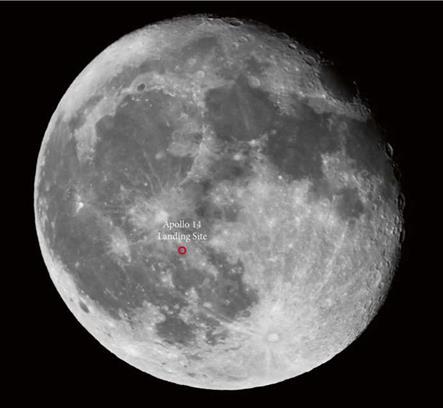
Fig. 6.3 Wide view of Apollo 14 site. Courtesy of the author
|
|
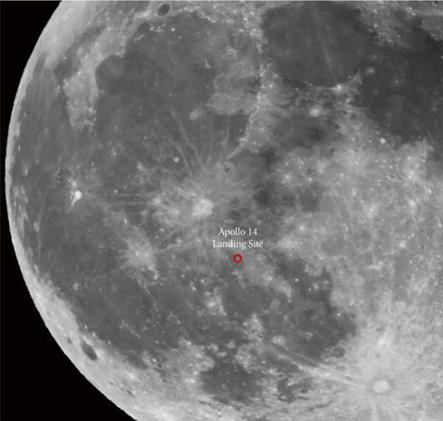
Fig. 6.4 Closer view of Apollo 14 landing site. Courtesy of the author
|
|
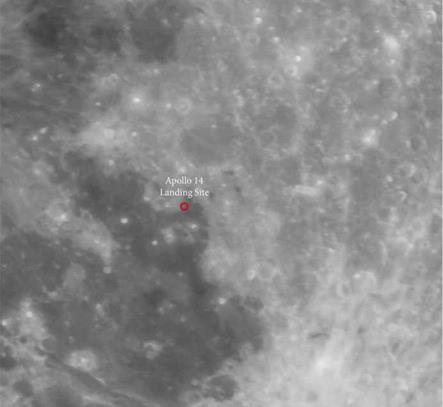
Fig. 6.5 Close-up zoom of Apollo 14 landing site. Courtesy of the author
|
Assuming success in sighting the Apollo 12 landing site, the amateur astronomer probably has spotted the Apollo 14 site in the same field of view. The Fra Mauro landing site is basically next door to the Apollo 12 Sea of Oceans site. The starting point for the backyard observer is again the terraced crater Copernicus. South of Copernicus, and east of crater Reinhold, is the crater Gambart. From there, the observer needs to go south and slightly west to locate Fra Mauro crater. The Apollo 14 landing site is actually just outside the Fra Mauro crater on the northern end.
|
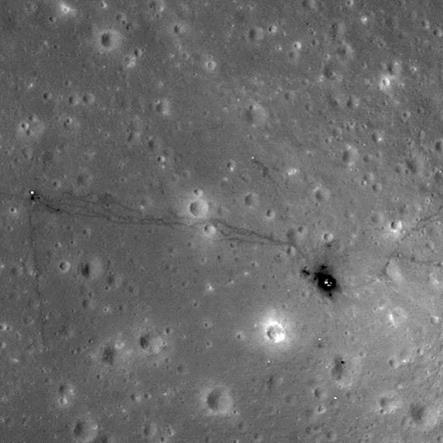
Fig. 6.6 LRO view of Apollo 14 Landing Site. Photo courtesy of NASA and Arizona State University
|
Apollo 14 inherited the Apollo 13 mission, which was targeted to land in the geologic unit known as the Fra Mauro Formation. The landing site selected for Apollo 14 was in the Fra Mauro Formation near Cone Crater, with the primary objective of sampling material excavated by the Imbrium impact.
With the successful pinpoint landing of Apollo 12, NASA mission planners were more confident in achieving landings in more challenging but geologically more interesting regions. However, planned landing sites were still restricted to regions near the equator. Also factored into the site selection was the requirement for the astronauts to accomplish scientific objectives within the confines of two 4-hours-long walking EVAs.
Fra Mauro was formed from ejected lunar material from the large impact that formed the Imbrium Basin. The widely distributed Fra Mauro material can be seen through backyard and research telescopes across the nearside of the Moon.
The Apollo 14 landing site therefore provides a geologically stratified or layered marker, dividing features that are older than the Imbrium impact from those that are younger. A precise age could be assigned to this geologic transition by geologists studying the returned samples from Fra Mauro. Also, because the Fra Mauro was ejected by the Imbrium impactor, scientists hoped that samples collected would have originated deep in the Moon’s crust, perhaps from tens of kilometers below the surface. The specific landing site within the Fra Mauro was near the younger Cone Crater. Cone Crater was chosen because it is large enough to penetrate through the lunar surface and exposed the layered rocks that were to be sampled.
|
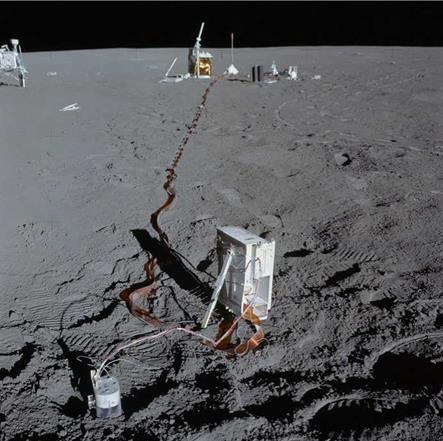
Fig. 6.7 Apollo 14 ALSEP. Courtesy of NASA
|
Figure 6.7 shows a photo taken by Alan Shepard of the SIDE/CCIG toward the Central Station, which is northwest of the instruments. The Suprathermal Ion Detector Experiment (SIDE) is at bottom center and the Cold Cathode Ion Gauge (CCIG) is at bottom right. Nearer the Central Station, from left to right are the MET, the geophone anchor (the stack tilted to the right), the Central Station, the mortar package for the Active Seismic Experiment, the Radioisotope Thermoelectric Generator (RTG), the Passive Seismic Experiment (PSE), and the Charged-Particle Lunar Environment Experiment (CPLEE). Note the inbound MET track coming into the picture at the right.
|

Fig. 6.8 Apollo 14 RTG, Central Station, and part ofLRRR. Courtesy ofNASA
|
The radioisotope thermoelectric generator, or RTG, was used as a power generator using an array of thermocouples to convert the plutonium-238 decay heat into electricity. The RTG served as the main power source for each ALSEP deployed by the Apollo missions.
|
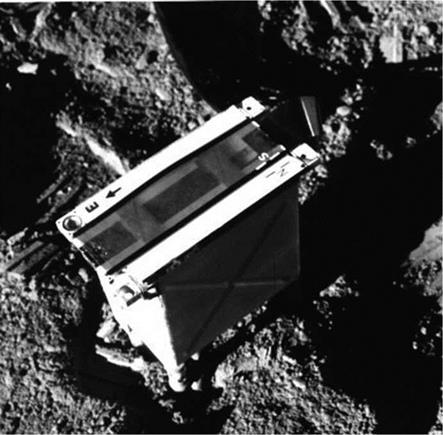
Fig. 6.9 Apollo 14 CPLEE, some of the equipment Apollo 14 astronauts Alan Shepard and Edgar Mitchell set up on Fra Mauro landing site. Courtesy of NASA
|
The Charged Particle Lunar Environment Experiment, or CPLEE (in Fig. 6.9), was deployed on Apollo 14 to measure plasmas on the Moon. It measured electrons and both positively and negatively charged ions near the Moon’s surface with energies between 50 and 50,000 eV. Less energetic ions were studied by the Suprathermal Ion Detector Experiment and more energetic particles were studied by the Cosmic Ray Detector experiment.
An unexpected result of CPLEE was recorded as the Apollo 14 lunar module ascent stage impacted the Moon after the crew had returned to lunar orbit and jettisoned it. Not one, but two distinct clouds of material from this impact were recorded by the CPLEE. The ascent stage impact occurred at a distance of about 66 km from the Apollo 14 landing site with approximately 180 kg of unspent rocket fuel left on board. The two clouds were about 14 and 7 km across and had expanded away from the impact site at velocities of about 1 km per second. This expansion velocity is similar to that measured by the Suprathermal Ion Detector for other impacts on the Moon.
|

Fig. 6.10 Modular Equipment Transporter (MET) with Apollo 14 Commander Alan Shepard nearby. Courtesy of NASA
|
Nicknamed the “rickshaw,” the MET seen in Fig. 6.10 was a cart for carrying around tools, cameras and sample cases on the lunar surface. Shepard can be identified by the vertical stripe on his helmet. After Apollo 13, the commander’s spacesuit had red stripes on the helmet, arms, and one leg, to help identify them in photographs. Apollo 14 was the only mission that the MET was used, as the functionality of the MET was superseded by the lunar rover.
|
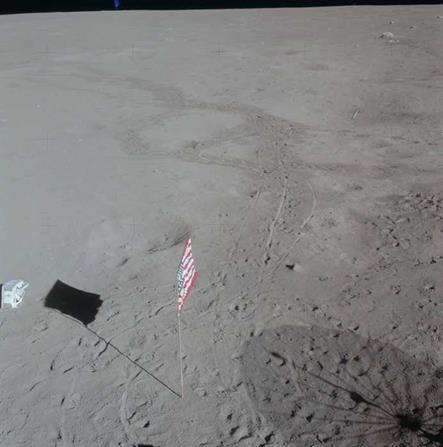
Fig. 6.11 The results of Shepard and Mitchell’s Lunar Sports. Courtesy of NASA
|
Alan Shepard’s extraterrestrial six-iron golf shot became the most famous extracurricular lunar activity ever planned and executed. Shepard smuggled on board a golf head from a six-iron, modified to attach to the handle of a lunar excavation tool, and two golf balls. As designed, the Apollo lunar spacesuit was limited in flexibility and range of motion. Shepard had to take single handed swings at the two golf balls. The first golf ball was topped, and can be seen in the small crater in Fig. 6.11. The second ball went “miles and miles and miles” according to Shepard, but was later estimated to have traveled a distance as 200-400 yards, which to a golfer is a remarkable distance for a six-iron. Mitchell then threw a lunar scoop handle as if it were a javelin, landing it near the first golf ball, and also seen in Fig. 6.11.
Even Stuart Roosa joined in with his own extracurricular activity of sorts. As a young man, Stuart Roosa worked in forestry, and for Apollo 14 he took several hundred tree seeds on the flight. These were germinated after the return to Earth, and these commemorative Moon Trees were widely distributed around the world.
|
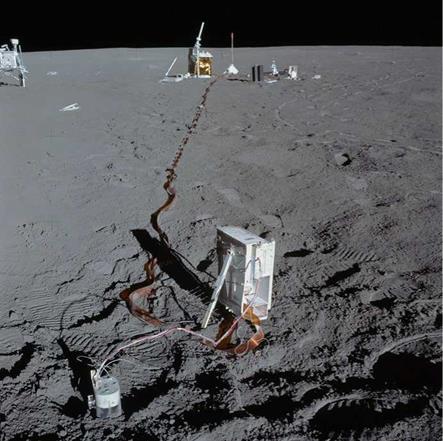
Fig. 6.12 ALSEP showing the CCG/SIDE with the Central Station, RTG, PSE, and CPLEE in the background. Courtesy of NASA
|
In the same implementation as Apollo 12, the Cold Cathode Gauge (CCG) measuring the atmospheric pressure of the lunar atmosphere is mounted on the Suprathermal Ion Detector Experiment (SIDE). These experiments provided data on the lunar environment by measuring the various properties of positive ions in the lunar ionosphere, collecting data on the plasma interaction between solar wind and the Moon, and measuring the electrical potential of the Lunar surface. In the ALSEP setup, the Central Station served as the command and control center for the ALSEP station. It received commands from Earth, transmitted data, and distributed power to each experiment. Communications with Earth were achieved through an antenna mounted on top of the Central Station and pointed towards Earth by the astronauts. Transmitters, receivers, data processors and multiplexers were housed within the Central Station.
Figure 6.12 includes the PSE that added additional seismic recording capability to that available from the Apollo 12 PSE. Apollo 14 also carried an Active Seismic Experiment, where seismic data was gathered from a “thumper” carried in the MET and activated as the astronauts traversed. Some explosive charges were also part of the setup. These charges were to be activated after the astronauts returned, but the charges failed.
As with the previous Apollo missions, our old friend the Solar Wind Composition Experiment (SWCE) was part of the Apollo 14 experiment complement. Additionally, a Lunar Portable Magnetometer (LPM) was included to measure how the Moon’s magnetic field varies in local regions. The LPM was not part of the ALSEP, but was mounted on the MET. Its data was measured as the astronauts traversed the local lunar region during their two EVAs’.
|
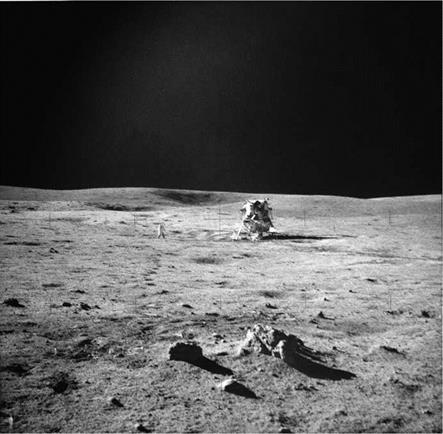
Fig. 6.13 Astronaut Edgar Mitchell, LM pilot, photographed this view showing astronaut Alan Shepard Jr. and the LM Antares. Mitchell took this picture during the second scheduled moon walk, on February 6, 1971. Courtesy of NASA
|
In addition to the lunar surface activities, Stuart Roosa kept busy performing several studies of the Moon from lunar orbit. Two experiments performed specifically from the CM Kitty Hawk while in orbit over the Moon were as follows:
The S-Band Transponder Experiment measured regional variations in the Moon’s gravitational acceleration. The S-band Transponder Experiment was performed on Apollo 14 and all the following Apollo missions. The frequency of radio waves transmitted by the spacecraft was accurately measured by Earthbound receivers, and compared with the frequency of the waves as transmitted by the spacecraft. The Doppler Effect caused by changes in the frequency of the radio waves from the Apollo 14 spacecraft’s motion was measured. By comparing the difference between the frequency of the radio waves from the spacecraft and at Earth reference, the spacecraft’s velocity was determined with very high accuracy. As the Apollo CM passed over gravity variations, the changes in the spacecraft’s velocity were measured. The primary gravitational influence on the spacecraft is the Moon’s gravity. Other objects, particularly the Earth and Sun, also affect the spacecraft, but the contributions of these objects can be readily calculated and factored out of the equation. As a result, this experiment provided maps of how the Moon’s gravity varies with location across its surface. This experiment attempted to explain the gravity variations of the Moon and the presence of mascons. This experiment predated GRAIL, as mentioned in Chap. 5 that finally solved the variable gravity caused by mascons.
The Bistatic Radar Experiment measured scattering of radar waves from the lunar surface. The Bistatic Radar Experiment was performed on Apollo 14, 15, and 16. In this experiment, radio waves were transmitted from the Command and Service Modules, bounced off the Moon’s surface, and recorded at tracking stations in California. The properties of the waves recorded on Earth were analyzed to determine the roughness of the Moon’s surface in the region where the radio beam was reflected. In addition, the electrical properties of the lunar surface, specifically the dielectric constant of the lunar rocks, were also determined. The region analyzed by this method was a swath of about 10 km across the Moon’s surface as the spacecraft moved in its orbit.
Performed primarily to and from the Moon, the Apollo 14 crew performed several experiments intended to explore various aspects of the space environment:
• The Window Meteoroid Experiment studied impacts on the windows of the Apollo 14 Command Module to obtain information about the size and distribution of very small micrometeorites. Only two micrometeorite impacts were identified following Apollo 14s return to Earth and examination under an electron microscope. One meteoroid impact was identified as 25 qm in diameter, while the other measured 85 x 130 qm.
• The Composite Casting Experiment studied the solidification of immiscible compositions in microgravity. Eleven samples of various immiscible compositions were heated, mixed by either premixed or mixed by shaking, and allowed to solidify by cooling in 0-g. The samples were heated in a small chamber and returned to Earth for examination and testing. Post-mission laboratory analysis indicated that a more homogeneous mixing was achieved than is possible with similar samples on Earth.
• The Electrophoresis Demonstration studied the separation of organic molecules in an electric field. Many organic molecules, when placed in water solutions, will migrate if an electric field is applied. Molecules of different substances move at different speeds; thus, they will separate. Gravity and thermal convection tend to diminish this separation if the solution density changes upon concentration of these molecules. A small unit was used to demonstrate the separations obtained with three sample mixtures having widely different molecular weights: (1) a mix of red and blue organic dyes, (2) human hemoglobin, and (3) DNA from salmon sperm. Post-mission review of the filmed data reveals that the red and blue organic dyes separated better and sharper than on Earth, as expected; however, separation of the hemoglobin and DNA could not be detected. Post-flight examination of the apparatus indicated that the samples were not released effectively (due to injection problems caused by the slide valve) to permit good separation, causing the dyes to streak. The hemoglobin and DNA samples did not separate because they contained bacteria that consumed the organic molecules prior to activation of the apparatus. Oops!
• The Heat Flow and Convection Demonstration studied convective flow and heat transport driven by surface tension. Three different types of test cells were used to detect convection directly, or detect convective effects by measurement of heat flow rates in fluids: radial, flow pattern, and zone. The heat flow rates were visually displayed by color-sensitive, liquid crystal thermal strips and the color changes filmed with the Data Acquisition Camera. It was demonstrated that surface tension in fluids under weightless conditions develops a regular pattern of convection cells known as Benard cells. Zone heating of liquid samples produced an unexpected cyclic heat-flow pattern.
• The Liquid Transfer Demonstration studied how different types of tank design influenced the pumping of liquids between tanks in microgravity. The demonstration had two sets of tanks, one set containing baffles and the other without baffles. Transfer of liquid between the un-baffled tanks was unsuccessful, as expected. Transfer between the baffled tanks demonstrated the effectiveness of two different baffle designs. The liquid-transfer demonstration clearly showed that suitable baffles inside a tank at 0-g permit positive expulsion of liquid contents, taking advantage of the surface-tension properties of the liquid. Orderly inflow into the receiver tank with no liquid loss through the gas vent was also successful.
• The Light Flashes Experiment studied light flashes seen by the crew that are related to charged particles in space. This experiment concluded that some of the flashes observed in space may be caused by direct ionization interactions of cosmic rays with the retina.
An experiment on extra-sensory perception, ESP, was independently performed
by Edgar Mitchell. This ESP experiment was not sanctioned by NASA. Prior to the
mission, Mitchell made arrangements with test subjects to receive his mentally
“transmitted” images of random symbols that he would project during his rest periods. This somewhat “New Age” experiment produced some unexpected results. The test subjects were wrong far more often than random probabilities would dictate. Mitchell provided a possible explanation for this result. He felt the test subjects did not factor in the 40 minutes weather delay that occurred during the Apollo 14 launch. Hence, Mitchell’s projection of these images were not synchronized with the test subjects ESP reception periods. Mitchell proposed that the test subject’s subconscious minds knew something was amiss, and that the experiment was not a failure. The more likely grade for the experiment would be that the results were inconclusive, at best, and at worst “New Age” pablum.
The return of the Apollo 14 astronauts marked the final time that returning Apollo astronauts were subjected to quarantine following their mission. The Apollo 11, 12, and 14 crews were isolated in a special quarantine chamber following their missions as a precaution to any potential lunar microbes infecting them and preventing any spread to the Earth environment. It was concluded that the Moon was lifeless, with no microbes, viruses, or bug-eyed monsters. The crews of Apollo 15, 16, and 17 were able to intermingle with the NASA and U. S. Navy personnel immediately following their reentry and landings. As a reminder, quarantine for Apollo 13 was not necessary, since they never landed on the Moon.
Upon the return of the crew to the CM Kitty Hawk, the ascent stage of Antares was sent to the surface of the Moon to provide seismic data. The ascent stage of Lunar Module Antares impacted the Moon on February 6, 7:45 PM EST, at longitude 3.42° S latitude 19.67° W. Both the Apollo 12 PSE and the newly setup Apollo 14 PSE recorded the Antares’s impact, which occurred between the two seismometers. The resulting impact rang for an hour-and-a-half, with both ASE setups recording the event. Antares’ descent stage and the mission’s other equipment remain at Fra Mauro at 3.65° S and 17.47° W.
With the precedent established with the Apollo 13 S-IVB third stage, the Apollo 14 Saturn third stage was intentionally impacted onto the Moon at longitude 8.09° South and latitude 26.02° West. Again, this event provided data to the Apollo 12 PSE using a known size and mass.
The Apollo 14 Command Module Kitty Hawk is on display at the Apollo/Saturn V building at the Kennedy Space Center.
![]() Gore, VA January 25, 2014
Gore, VA January 25, 2014










